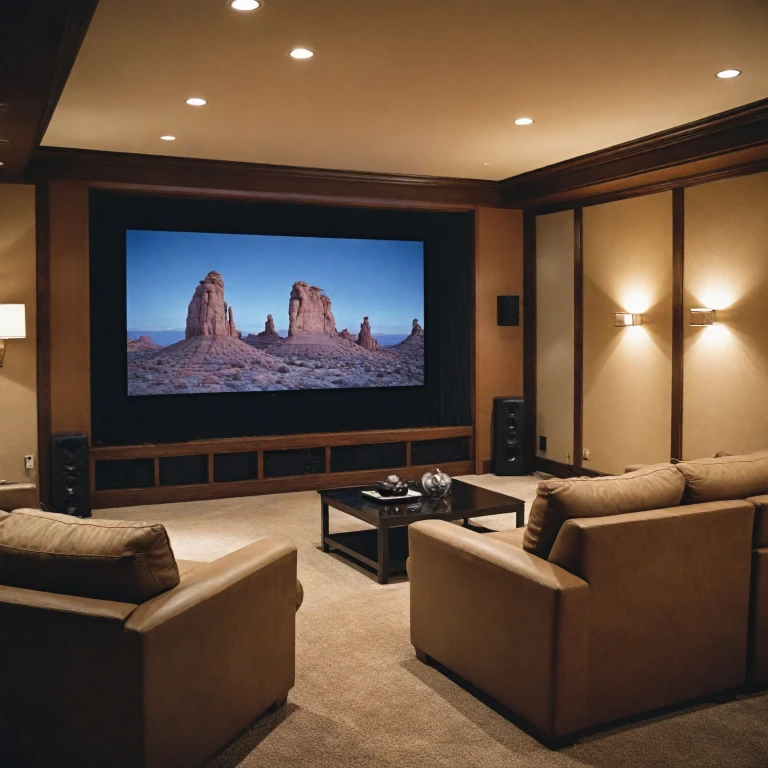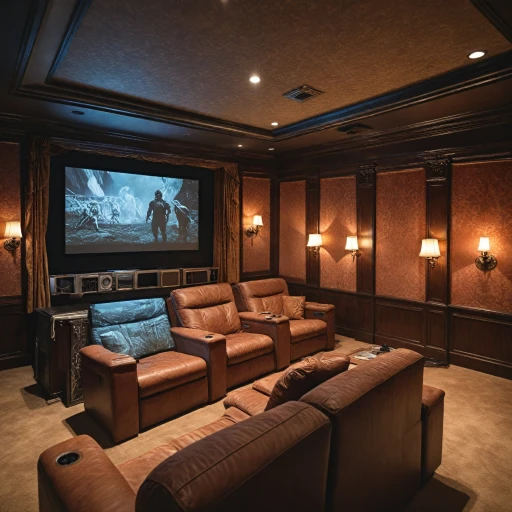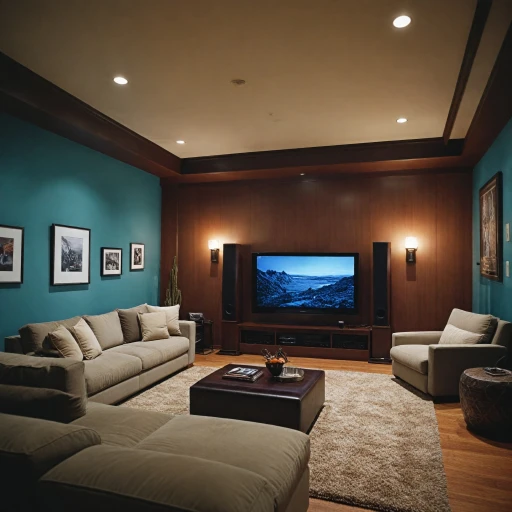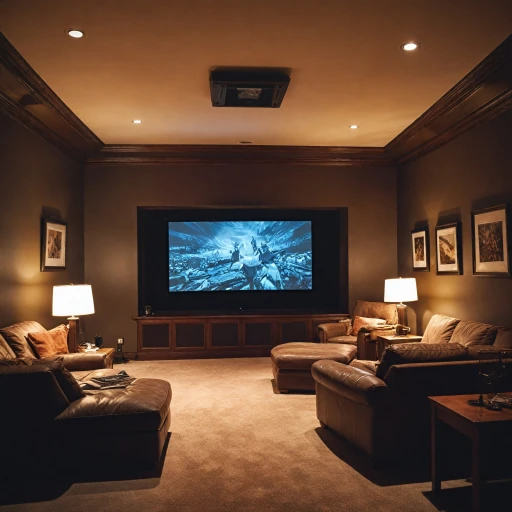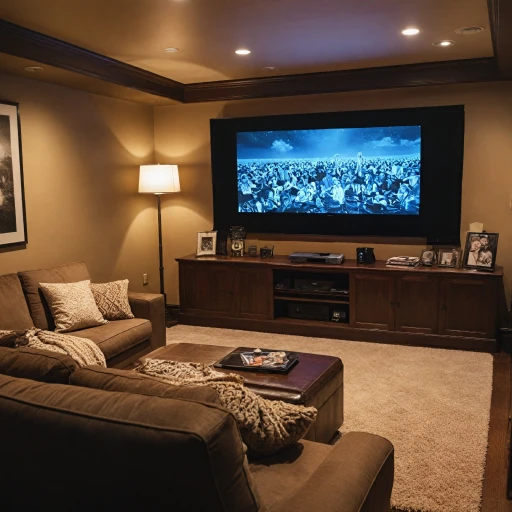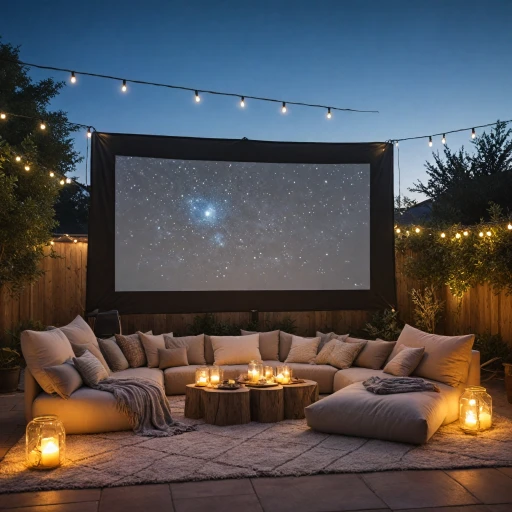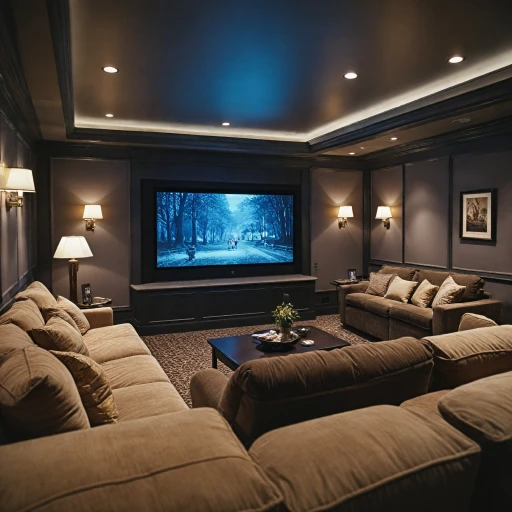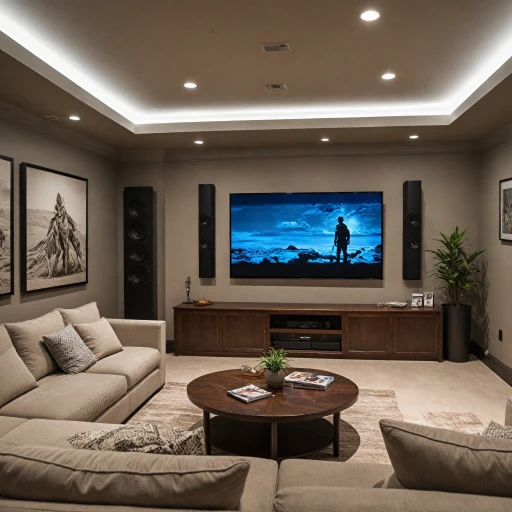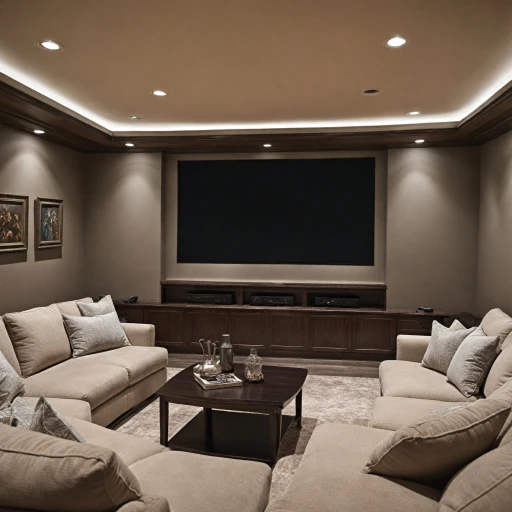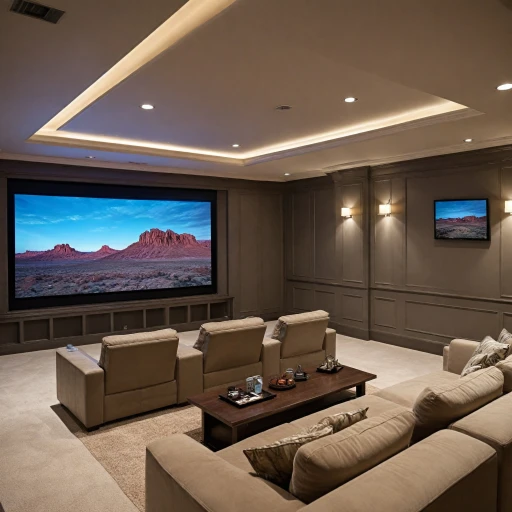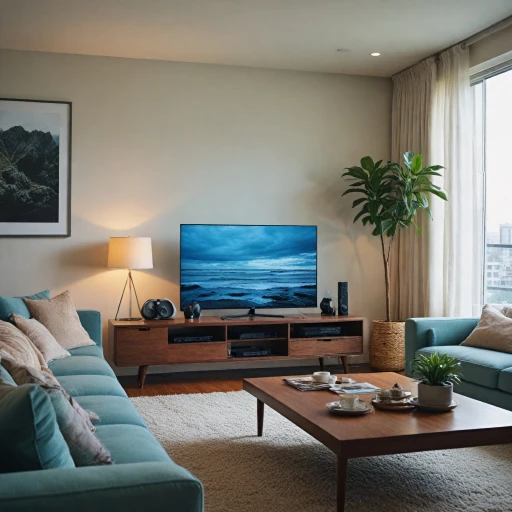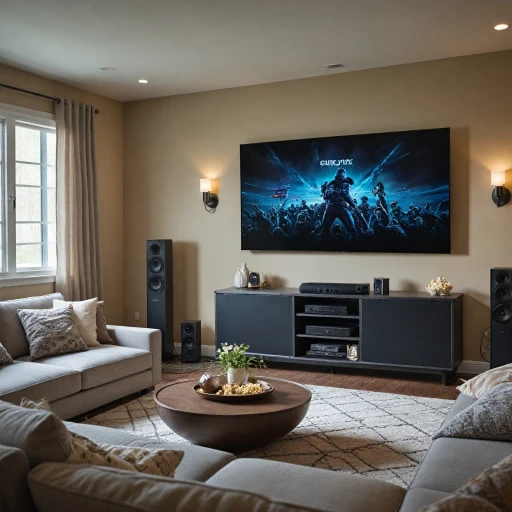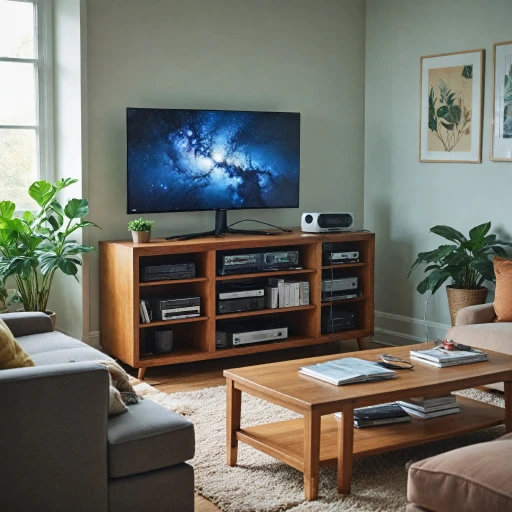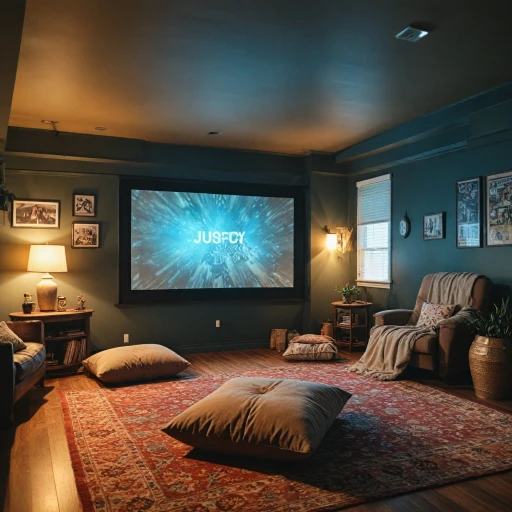
Understanding the Role of a Subwoofer
The Importance of Subwoofers in Your Home Theater
In the realm of home theater systems, understanding the role of a subwoofer is crucial for achieving the best sound quality. Subwoofers are specialized speakers designed to reproduce low-frequency sounds, also known as bass. These deep bass tones add richness and depth to the audio experience, which can significantly enhance your movie nights or music sessions.
Without a powerful subwoofer, your home audio system might lack the punch needed to fully immerse yourself in action-packed scenes or feel the full impact of a musical score. Even the best speakers require the support of a quality subwoofer to handle these low frequencies effectively.
For theater fans who demand the best subwoofer experience, considering factors like power, frequency range, and room size is essential. Options like the SVS Pro and the Dayton Audio models offer varying power outputs and sound capabilities, ensuring you find the right fit for your setup.
By incorporating a capable subwoofer, audio enthusiasts can balance their sound system to deliver both powerful sound and refined audio clarity, making it an indispensable component in any home theater package.
Key Features to Look for in a Subwoofer
Essential Features to Consider for Your Subwoofer
When diving into the world of home theater audio, selecting a subwoofer with the right features can make all the difference in your listening experience. Understanding what to look for can elevate the sound output of your entire system. Let's break down some key elements to consider when choosing a subwoofer that fits your needs.- Power and Output Capacity: Power is central to achieving that rich, deep bass that theater fans crave. Look for a subwoofer with sufficient watts RMS to drive those low frequencies. Consider models like the SVS Pro or the Speedwoofer MKII, known for their robust power sound delivery.
- Frequency Range: The ability to handle low frequency extensions can greatly impact sound quality. Subwoofers like the SVS Micro or the Sonos Mini offer impressive frequency sound capabilities to ensure you don't miss any deep bass notes in your audio.
- Size and Design: Whether you're setting up in a living room or a dedicated theater, consider the subwoofer's size. Sealed subwoofers can be a great choice for confined spaces due to their compact design and tight bass performance.
- Compatibility with Existing System: Ensuring your subwoofer integrates seamlessly with your current speakers and home audio setup is crucial. An option like the Dayton Audio subwoofers ensures compatibility with many systems.
- Wired vs. Wireless: Depending on your room's layout, a wireless subwoofer may offer better flexibility in placement, enabling you to achieve optimal sound performance without unsightly cables.
Types of Subwoofers: Which is Right for You?
Choosing the Right Type of Subwoofer for Your Space
When it comes to selecting the best subwoofer for your home theater system, understanding the different types available is crucial for enhancing your movie-watching experience. Let's explore to see which subwoofer design suits your needs.
One common choice among theater fans is the sealed subwoofer. This type delivers tight, accurate bass, thanks to its enclosed design. It’s ideal for home audio systems where sound quality and low-frequency detail matter most. Sealed subwoofers can provide deep bass and excel in smaller spaces such as a living room.
On the other hand, if you're looking for maximized power and bass output, a port or vented subwoofer might be the way to go. These designs often produce louder, more extended bass frequencies, making them perfect for larger theater rooms where low-end punch is important.
Wireless options, like the Sonos Mini, offer the convenience of no cables while still delivering impressive sound quality. They integrate well into systems with wireless speakers for a clutter-free setup.
If budget and performance are your top concerns, the Dayton Audio models or SVS subwoofers, like the SVS Pro and SVS Micro, are popular amongst audiophiles for impressive watts RMS output and robust build quality.
And don't overlook the innovative Speedwoofer MKII, our top pick for those after a balance of best price-performance. This model offers a great combination of bass top output and frequency sound control, ensuring your theater system quakes with the perfect amount of punch.
Regardless of your choice, aligning the subwoofer's capabilities with your theater room's acoustics will ensure a satisfying audio experience. For tips on aligning your home theater's visual setup with perfect screen selection, explore further resources to elevate your setup.
Placement Tips for Optimal Sound
Strategic Placement for Enhanced Bass
To achieve the best sound quality in your home theater, the placement of your subwoofer is crucial. Proper positioning can significantly enhance the deep bass output, ensuring that low frequency sounds are felt as much as they are heard. Here are some tips to help you optimize your subwoofer's placement:
- Corner Placement: Placing your subwoofer in a corner can amplify the bass response, as the walls help to reflect sound waves back into the room. This is especially effective for sealed subwoofers like the SVS Micro or the Speedwoofer MKII.
- Distance from Walls: While corner placement can boost bass, too close to the wall can cause muddiness. Aim for a balance by keeping some distance, allowing the subwoofer to breathe and produce clearer sound.
- Room Size Consideration: The size of your room plays a role in determining the power needed from your subwoofer. Larger rooms may require more powerful subwoofers, such as those with higher watts RMS, to fill the space with sound.
- Experiment with Positioning: Don’t hesitate to try different spots. Sometimes, moving the subwoofer just a few feet can make a noticeable difference in sound quality.
- Integration with Other Speakers: Ensure your subwoofer is well-integrated with your other speakers. This helps in achieving a balanced audio system, where the bass complements rather than overpowers the other sound frequencies.
For theater fans looking to maximize their home audio experience, these placement tips can make a significant difference. Whether you’re using a Sonos Mini or a more powerful Dayton Audio subwoofer, strategic placement is key to unlocking the full potential of your home theater system.
Balancing Your Audio System
Optimizing Your System for Balanced Audio
Achieving a seamlessly integrated audio experience in your home theater requires meticulous balancing of your entire system. Balancing ensures that your subwoofer complements your speakers and delivers a harmonious soundscape, whether you're immersing yourself in movie nights or music sessions. Begin by setting your subwoofer’s crossover frequency appropriately. This crossover should be set to ensure the subwoofer handles the deep bass frequencies your main speakers struggle with. A general starting point for most home audio systems is around 80 Hz, but the best fit may vary depending on the specific speakers and subwoofer you use, such as the power-packed SVS Pro or the versatile Speedwoofer MKII. Adjusting the volume level on your subwoofer is crucial. Ensure the bass output doesn’t overpower the rest of your system, which can undermine the clarity and balance of your sound. A sound level meter can be handy here, or many home theater receivers offer an automated room correction feature to help achieve balanced sound output. Experiment with your subwoofer's phase control. This can optimize how well the subwoofer integrates with the speakers by altering the timing of sound waves. Adjusting phase can significantly enhance sound quality, especially when using multiple subwoofer setups common in theater fans' living rooms. Finally, remember that subwoofers, like the SVS Micro, are not just about power and output, but about blending seamlessly with the low-frequency sound to create an immersive home theater experience. Continuous listening tests in your room will be key until you find the most satisfying audio balance. For more insights on enhancing your home theater audio, check out our detailed guide on [optimizing sound] (https://www.home-theater-projector-guru.com/blog/enhancing-your-home-theater-experience-with-optimal-sound).Top Subwoofer Recommendations
Our Top Choices for Deep Bass Enthusiasts
Choosing the best subwoofer for your home theater can be overwhelming with numerous options available in the market. To assist you, we've rounded up some of the top picks well-suited for delivering exceptional low-frequency sound and deep bass for your favorite movies and music.
- SVS SB-1000 Pro: Known for its compact size yet powerful performance, this subwoofer offers impressive sound quality with a frequency response range ideal for most mid-sized rooms. Its sealed design delivers tight bass that fans of intricate audio will appreciate.
- Dayton Audio SUB-1500: If you're searching for significant power and output without breaking the bank, this model provides an impressive 150 watts RMS, delivering solid bass performance perfect for large living spaces and home theaters.
- RSL Speedwoofer 10S MKII: Frequently regarded as the best subwoofer for both beginners and pro audio enthusiasts, the Speedwoofer MKII combines efficiency and power for an immersive theater experience. With its deep bass output, it is particularly favored by bass enthusiasts.
- Sonos Sub Mini: Perfect for those with Sonos wireless speakers or seeking a minimalist design, the Sonos Mini will integrate seamlessly into your home audio system, providing enriched bass experiences without the need for large equipment.
- SVS 3000 Micro: For those requiring advanced capabilities and compact size, the SVS 3000 Micro is engineered to produce dynamic bass in any space. Its cutting-edge technology ensures no compromise on sound quality.
Each of these subwoofers brings unique attributes catering to different room configurations, sound preferences, and budgetary considerations. Ultimately, selecting the right model depends on aligning these aspects with your personal audio desires to ensure a perfectly balanced theater system.
